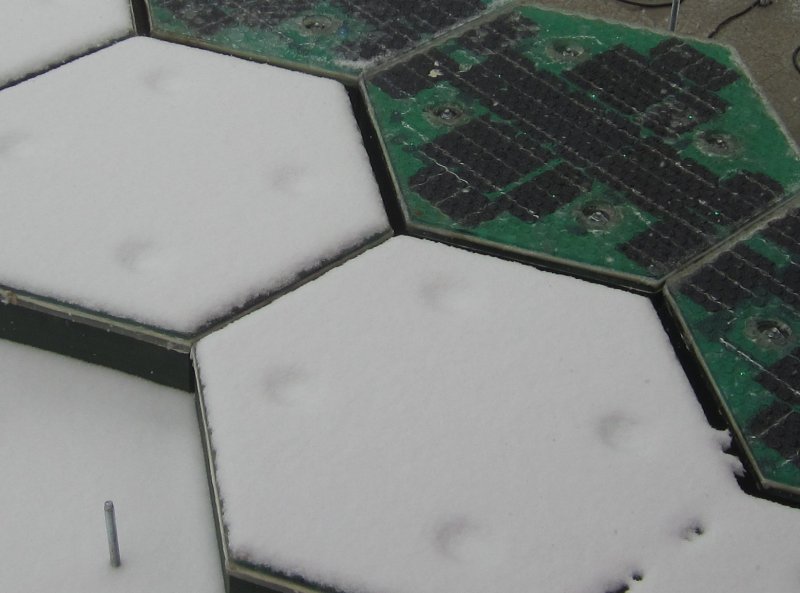
This Solar Roadways project started showing up in my Facebook news feed, and seems to be getting a lot of popular support.
Except, I’m guessing, from actual engineers.
The idea that we can convert our roadway surfaces to electrical generation solar collectors has numerous practical problems. In fact, I don’t see how anyone with an engineering background could have seriously entertained the idea.
Here are a few of the problems which first came to my mind. (Joel Anderson at Equities.com, who calls the Solar Roadways idea “really silly”, has a few more of his own).
1. You can’t point the roadway to track the sun, to improve energy generation efficiency (which is only about 15% for photovoltaics, anyway, which makes PV generation expensive on a large scale).
2. Why embed solar panels in such a harsh environment where they are constantly being run over and flexed by millions of tons of vehicles? There are many more practical locations to use (such as roofs, that face southward).
3. How do you keep the solar collectors clean (as millions of tires scrub over them, and engines drip oil on them) so that sunlight can get collected by the embedded PV surfaces?
4. Who is going to actually PAY for such an obscenely expensive enterprise (other than government, which means you, the taxpayer)?
Furthermore, the above photo really has me suspicious. The photo supposedly shows the “active” portion of a solar parking lot melting snow. Say WHAT?….here’s a little lesson in thermodynamics. A dark surface heated by the sun converts essentially all of the absorbed sunlight into heat energy…which is what is needed to melt snow. If you instead siphon off some of the absorbed solar energy in the form of electricity, there is actually LESS heat energy to melt snow!
So, unless someone can correct me, something here smells fishy. And I’m being polite.
The Solar Roadways project is run by a couple who have been soliciting donations at the Indiegogo.com crowd funding website. Last I looked, it was approaching $1.4 Million(!) Not bad for a mom-and-pop operation.
Obviously, I work in the wrong field.
See my follow-up post: Why are solar freakin’ roadways so freakin’ popular?

 Home/Blog
Home/Blog



